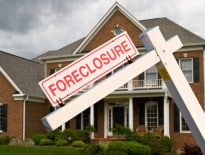By 2035, more than one in five people in the U.S. will be ages 65 and older, and one in three households will be headed by someone in that age group, according to “Projections and Implications for Housing a Growing Population: Older Adults 2015-2035,” a report released today by the Harvard Joint Center for Housing Studies (HJCHS).
This growth will increase the demand for affordable, accessible housing that is well connected to services beyond what current supply can meet.
According to the report, as the Baby Boomer generation ages, the U.S. population ages 65 and over is expected to grow from 48 million to 79 million, and the number of households headed by someone over 65 will increase by 66 percent, to nearly 50 million. This growth will increase the demand for housing units with universal design elements such as zero-step entrances, single-floor living and wide halls and doorways. However, only 3.5 percent of homes currently offer all three of these features.
“The housing implications of this surge in the older adult population are many,” Chris Herbert, managing director of the HJCHS, said in a statement. “And call for innovative approaches to respond to growing need for housing that is affordable, accessible and linked to supportive services that will grow exponentially over the next two decades.”
The report notes that in many surveys, older adults express a strong desire to live at home for as long as possible. Achieving that goal will require public and private action to support modifications to existing homes, take steps to address the affordability challenges facing both owners and renters, and adapting the health care system to enhance service delivery in the home. There is also a need to expand the range of housing options available to better meet the needs of an aging population and improve options for older adults to remain in their community when their current home is no longer suitable.
“Right now, more than 19 million older adults live in unaffordable or inadequate housing, and that problem will only grow worse in the next two decades as our population ages,” Lisa Marsh Ryerson, president of AARP Foundation, which provided funding for the report, wrote in the statement. “This important follow-up study to Harvard’s ground-breaking 2014 report on housing America’s older adults not only calls attention to important trends but also helps point to the kind of solutions — requiring cross-sector collaboration between the housing industry, policymakers, and public, private and philanthropic organizations — that will fulfill older adults’ ardent desire to continue living independently at home with security and dignity.”






